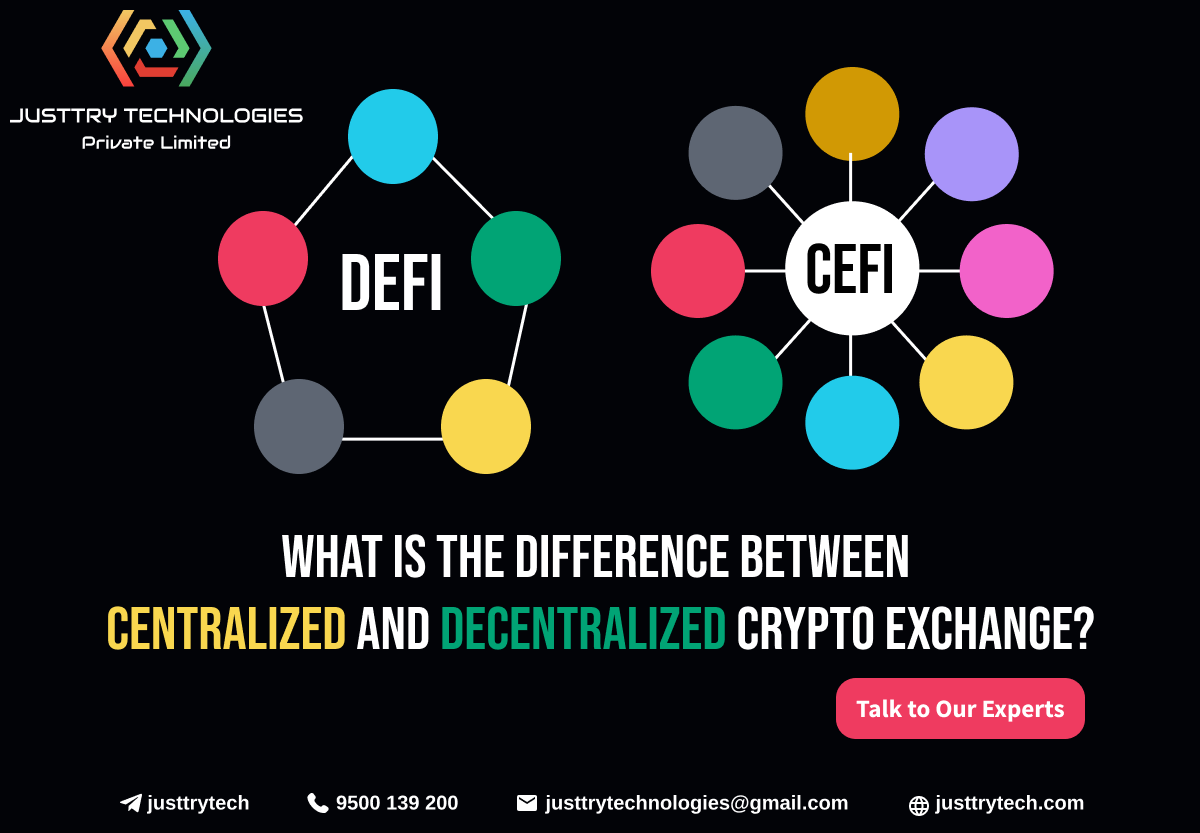The realm of cryptocurrency exchange development has birthed two distinct paradigms: centralized exchanges (CEXs) and decentralized exchanges (DEXs). These two models diverge significantly in their structure, operation, and underlying philosophy.
In this blog, we aim to delineate the differences between centralized and decentralized crypto exchanges, shedding light on their respective merits and shortcomings within the landscape of cryptocurrency exchange development.
Centralized Cryptocurrency Exchanges (CEXs):
Centralized exchanges operate like conventional financial institutions, except that trading activities are monitored and facilitated by a central organization or intermediary. By depositing their money into centralized wallets, users have to entrust the exchange with their money and give up ownership of their assets. As a custodian, the exchange looks after users' money and trades on their behalf.
Key Characteristics of Centralized Cryptocurrency Exchanges:
1. Centralized Control:
CEXs are governed by a company or organization that dictates the platform's policies, fee structures, and asset listings. As there is no direct control over the funds once deposited, users must trust the exchange to operate transparently and securely.
2. Custodial Wallets:
Funds in centralized exchanges are stored in custodial wallets controlled by the exchange. While this system provides liquidity and convenience, it exposes users to the risk of theft, hacking or mismanagement of the exchange.
3. Regulatory Compliance:
Regulatory compliance requirements such as Know Your Customer (KYC) and Anti-Money Laundering (AML) protocols are enforced by many CEXs. Although the goal of these safeguards is to stop illegal activities, they pose privacy issues and limit access to individuals who remain anonymous.
Decentralized Cryptocurrency Exchanges (DEXs):
Decentralized exchanges operate on blockchain networks, enabling peer-to-peer trading without the need for a central authority or intermediary. Trades are executed directly between users' wallets through smart contracts or other decentralized protocols, empowering users to retain control over their funds.
Key Characteristics of Decentralized Cryptocurrency Exchanges:
1. Trustless Trading:
DEXs facilitate trustless trading, allowing users to maintain control over their funds throughout the trading process. Trades are executed peer-to-peer, eliminating the need for a central authority to oversee or facilitate transactions.
2. Non-Custodial Architecture:
DEXs operate on a non-custodial model, where users retain ownership of their private keys and assets. Funds are never held in centralized wallets, mitigating the risk of theft, hacking, or mismanagement by third parties.
3. Permissionless Access:
Decentralized exchanges typically offer permissionless access, allowing anyone with an internet connection and a compatible cryptocurrency wallet to participate in trading activities. This fosters greater accessibility and inclusivity for users worldwide.
Conclusion:
In conclusion, centralized and Decentralized cryptocurrency exchanges represent different approaches to trading digital assets, each with its advantages and challenges.
While centralized exchanges provide convenience, liquidity, and regulatory compliance, they also introduce risks associated with centralization and security controls. Decentralized exchanges, on the other hand, prioritize decentralization, security, and user autonomy, although they face challenges related to liquidity, scalability, and user experience. The choice between centralized and decentralized exchange development ultimately depends on personal preferences, risk tolerance, and values within the cryptocurrency community.





Comments